Folk exhibition has objects never displayed before
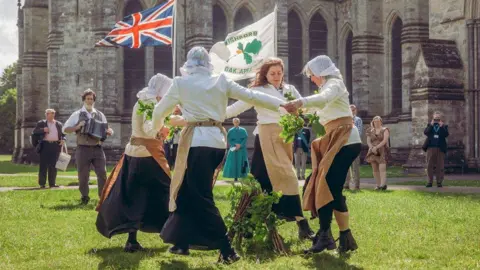 Create Studios
Create Studios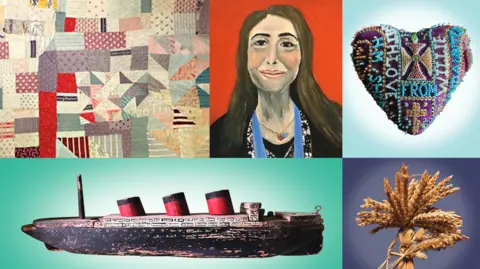 Wessex Museums
Wessex MuseumsAn exhibition focusing on the folklore, art and customs of the Wessex area is putting objects from several museums and private collections on show.
Called Un/common People, it has opened in Swindon before going to the Wiltshire Museum in Devizes, Poole Museum and then finishing in Salisbury Museum.
The items on show cover a period of hundreds of years up to the present day.
Anna Bryant, Exhibition Coordinator, said: "Many of these objects haven't been seen in public before - it's been a real labour of love."

With objects from five museums from a partnership called Wessex Museums and private lenders over the region, the Museum of British Folkore has also loaned objects.
Organisers say the exhibition took around a year and a half to put together.
They say part of the challenge is to explain what "folk" means.
Kirsty Hartsiotis, Collections and Exhibitions Officer at Swindon Museums, said: "Folk - it's us, the people. People are folk. It's what we do.
"It might be songs we sing, the stories we tell, the things we do to celebrate.
"It's not commercial. It's not high culture, it's grassroots level for ourselves" she explained.
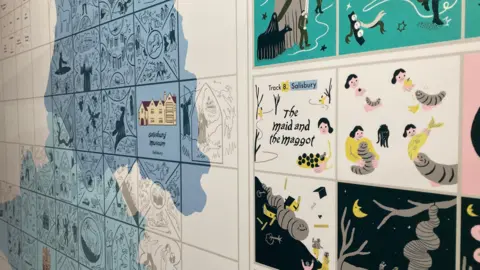
While Stonehenge and Avebury feature heavily, stories and songs are key to the exhibition, with a folk musician - Chloe Hetherington - commissioned to re-record them.
Many have been collected and a few are showcased, along with stories.
One from Swindon - called the Female Robber - was written down by local poet Alfred Williams, who travelled 1,500 miles around the area in the early 1900s recording the songs of the communities.
Other stories range from Stonehenge being built by the wizard Merlin, a ghost in Highworth being stopped using cider and the interestingly named "maid and the maggot".
Ms Hartsiotis said the woman takes a maggot home in the tale, but "it's a mistake, I'm just going to say that".
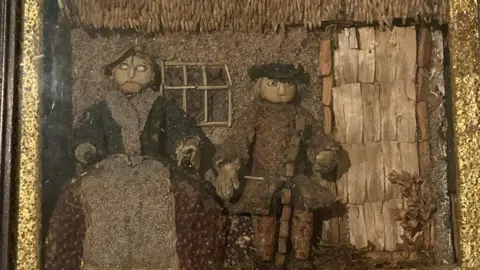
Artwork by people over time is on display - like a picture made from tiny seeds, 20 different kinds, including poppy, stinging nettle and daisy seeds and impressive large pincushions made by soldiers recovering from World War One.
People can also see the hand-drawn Stonehenge Free Festival posters.
Visitors will be able to learn about possible superstitions, like a selection of old shoes found in walls.
Simon Costin - from the Museum of British Folklore - explained: "These are shoes which have been secreted within a house, often underneath doorways or within chimneys. We don't really know why people did it.
"There are theories that they were hidden away as protection against witchcraft, the idea being that the sense of the individual would be hidden in this object so evil influence would be directed towards the shoe," he added.
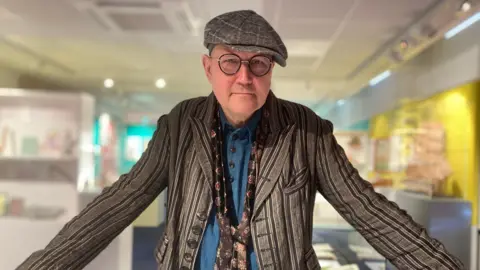
There is also the folklore side of things.
Mellany Robinson, from the Museum of British Folklore, explained one example from Calne about rumours of there having once been a medieval castle there.
"This story has been so persistent that people decided in 2010 to conduct a dig at the site where the castle is believed to have been constructed," she said.
Investigators did not find a castle, but some objects were discovered and are now in the exhibition.
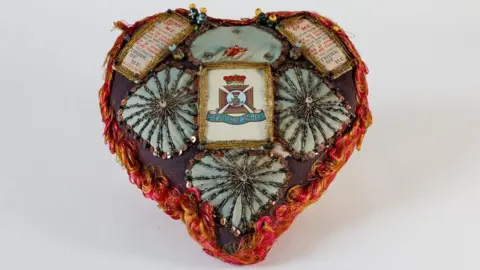 Wessex Museums
Wessex MuseumsAlongside art and craft produced over centuries, there are also objects from the present day, including decorated skateboards, pebbles painted marking the Covid-19 pandemic and World of Warcraft figures.
Amy de la Haye - from the London College of Fashion - has also been involved in putting the exhibition together and said "folk" is everywhere.
"The way that people communicate is not only through their dress, but they way their decorate their skateboards.
"These objects are evidence of a life lived. They were objects made for daily life, for people's homes," she added.
Follow BBC Wiltshire on Facebook, X and Instagram. Send your story ideas to us on email or via WhatsApp on 0800 313 4630.
